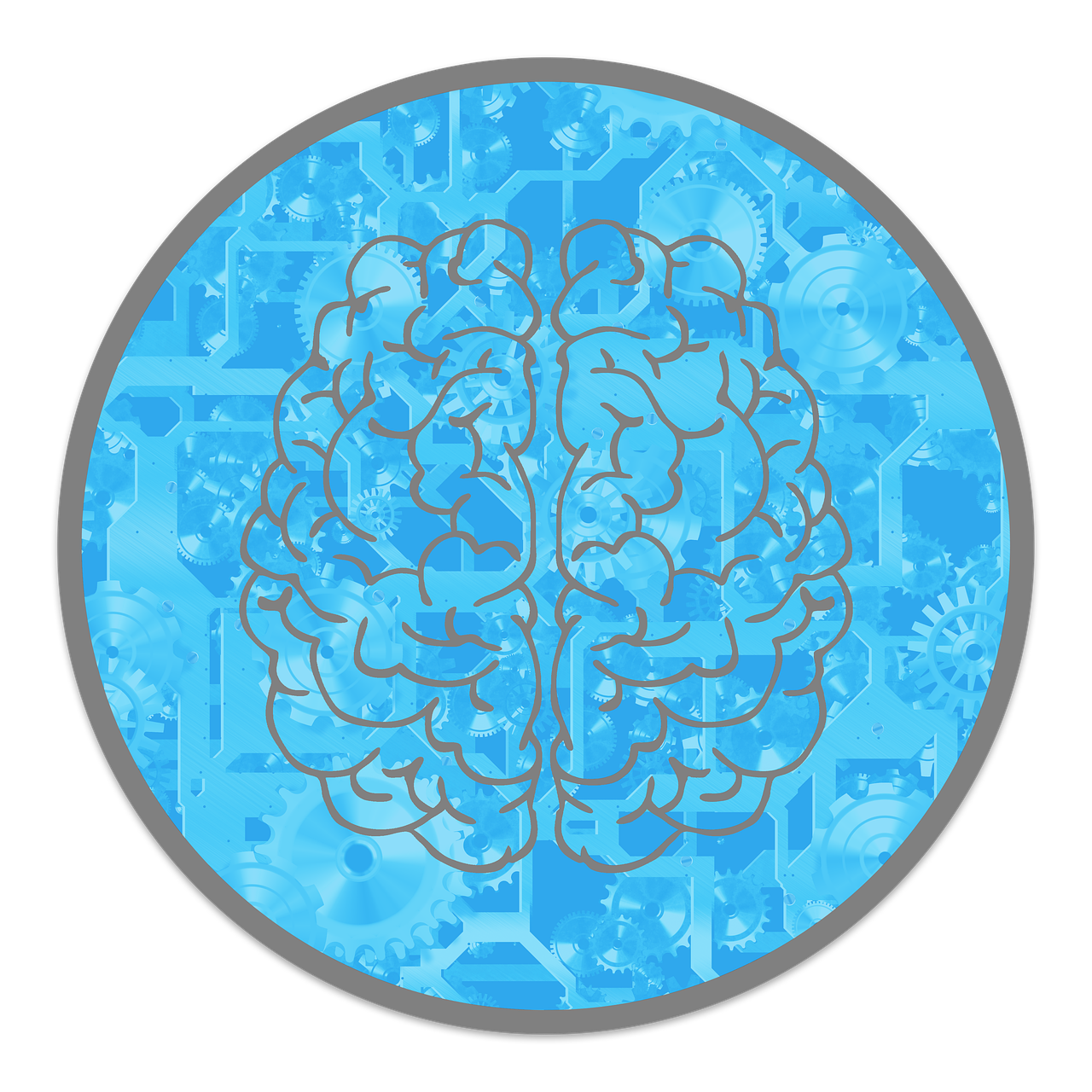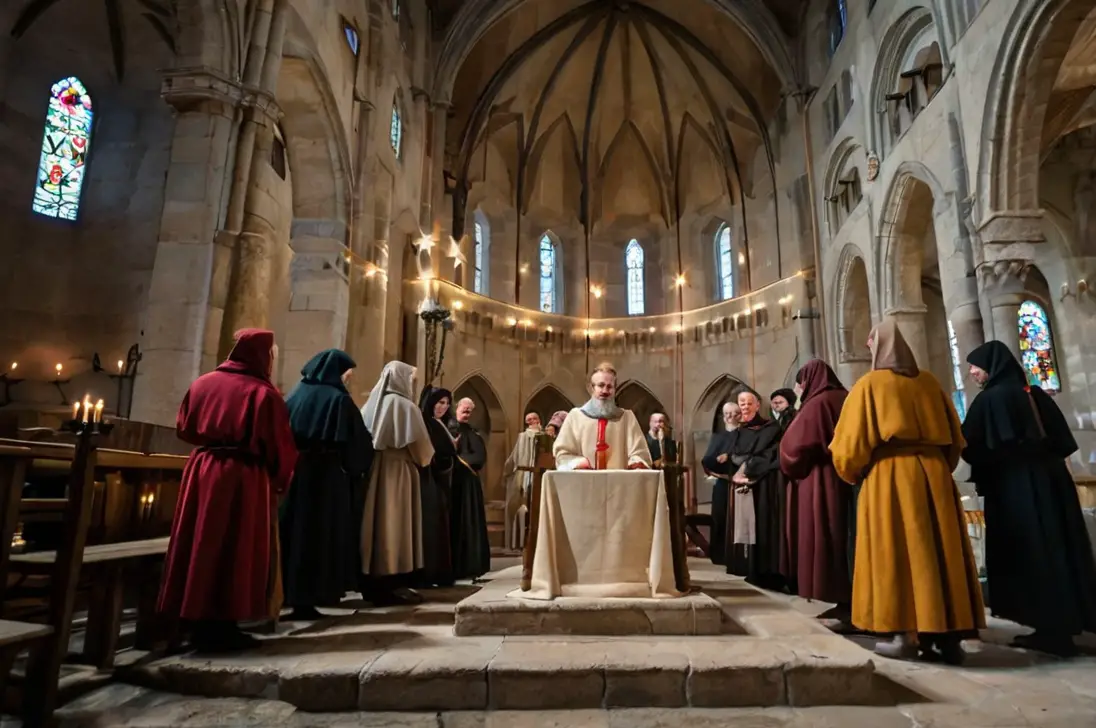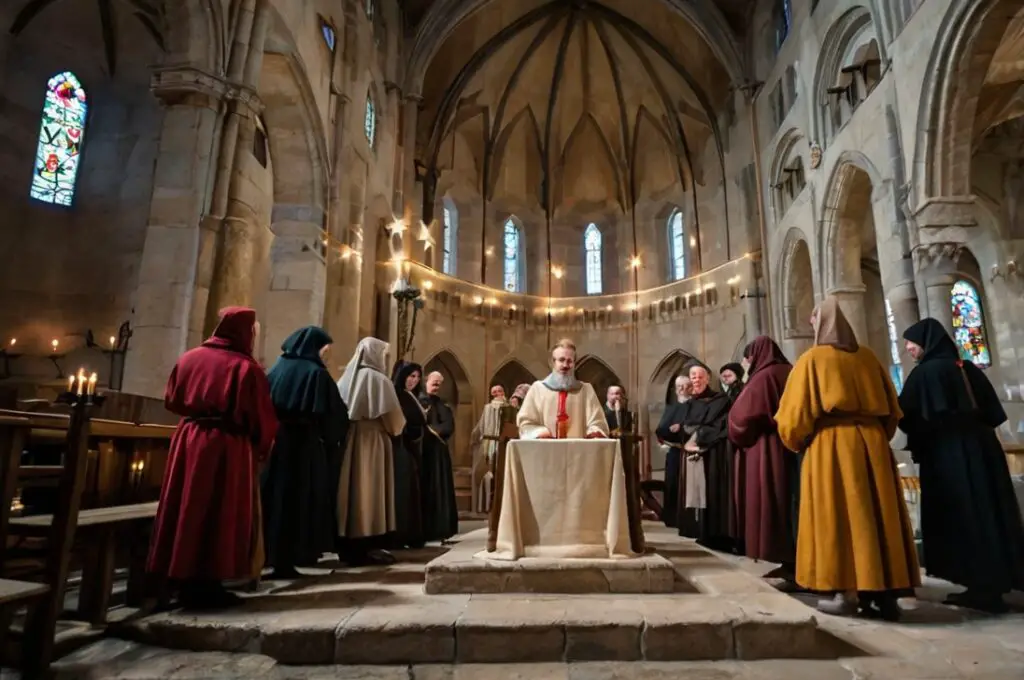
The Middle Ages, often referred to as the medieval period, witnessed significant transformations that shaped the course of Western civilization.
Among the most influential developments was the spread of Christianity.
This era saw the rise of Christianity from a persecuted minority faith to the dominant religion across Europe.
Understanding how Christianity spread during the Middle Ages offers valuable insights into the social, cultural, and political dynamics of the time.
Rise of Christianity in the Roman Empire
Christianity began as a small Jewish sect in the 1st century CE, but it rapidly gained followers throughout the Roman Empire.
Initially, Christians were persecuted for their beliefs, but the situation changed dramatically with Emperor Constantine’s conversion to Christianity in the early 4th century.
In 313 CE, Constantine issued the Edict of Milan, which granted religious tolerance to Christians and allowed them to worship freely.
This pivotal moment marked the beginning of Christianity’s transformation into a major religious force.
By the late 4th century, Christianity had become the state religion of the Roman Empire under Emperor Theodosius I.
This official endorsement facilitated the construction of churches, the organization of Christian communities, and the establishment of a unified Christian doctrine.
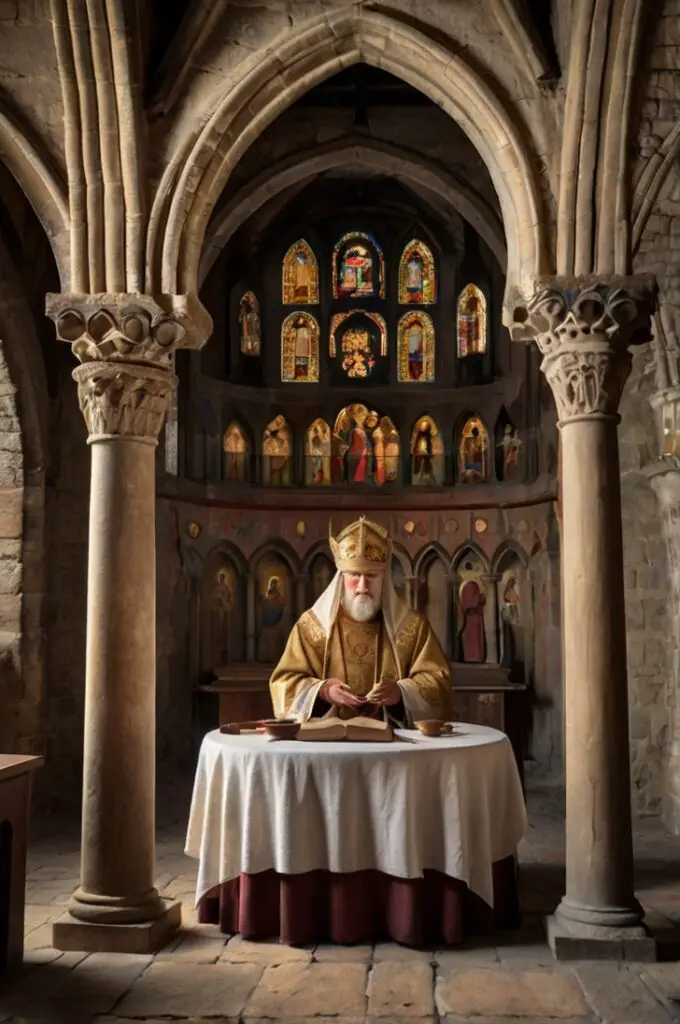
Factors Contributing to the Spread of Christianity
Missionary work
Missionaries were crucial in spreading Christianity across Europe.
Key figures like St. Patrick in Ireland, St. Augustine of Canterbury in England, and St. Boniface in Germany worked tirelessly to convert people from pagan beliefs to Christianity.
They did this by adapting their message to fit local customs and traditions, which made Christianity more understandable and acceptable to new audiences.
By aligning their teachings with existing practices, missionaries helped people see Christianity as a natural extension of their own cultural traditions.
Monasticism
Monasteries played a vital role in spreading Christianity.
Monastic communities, such as those established by St. Benedict in Italy, were centers of learning and culture.
These monasteries preserved important texts, educated people, and became active hubs for missionary work.
Monks and nuns dedicated their lives to prayer, study, and hard work.
Their disciplined lifestyle and commitment helped strengthen and spread the Christian faith, making monasteries key players in the religion’s expansion.
Political support
Support from political leaders was a major factor in the spread of Christianity.
Many rulers converted to Christianity and used their authority to promote the religion.
For instance, Clovis I, the king of the Franks, converted to Christianity around 496 CE and encouraged his subjects to do the same.
When political leaders embraced Christianity, they often led by example, which helped establish the faith as a dominant force in their territories and beyond.
Cultural integration
Christianity often adapted to local cultures, which made it easier for people to accept the new religion.
Many pagan festivals and rituals were reinterpreted in a Christian light, leading to the creation of Christian holidays like Christmas and Easter.
By integrating familiar traditions into Christianity, the new religion became more appealing and accessible to a wider audience.
This blending of old and new customs helped ease the transition from paganism to Christianity.
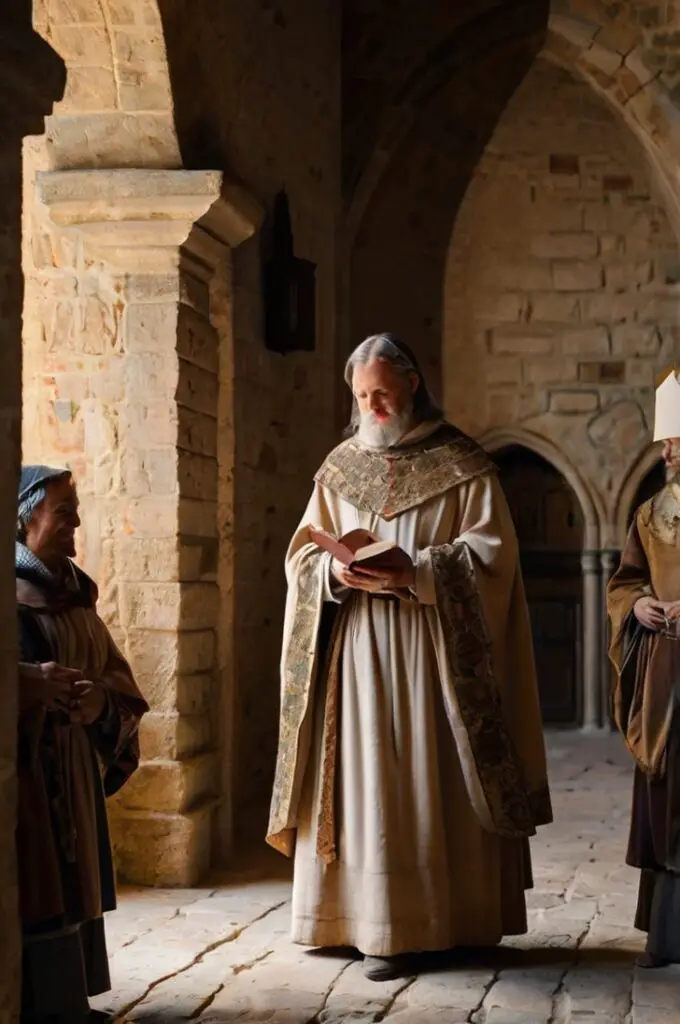
Impact of Christianity on Medieval Society
Christianity profoundly influenced medieval society in various ways:
Social structure
Christianity deeply influenced the social structure of medieval Europe.
The Church was a central part of everyday life, with bishops and abbots holding significant power.
They influenced not just religious practices but also political decisions.
The idea of Christendom, a community of Christian believers, created a shared identity among Europeans, helping to unify different regions under common values and norms.
Education and learning
During the medieval period, monasteries and cathedral schools were the main places for learning and education.
The Church played a crucial role in preserving ancient knowledge and promoting literacy.
Monks and scholars, like Alcuin of York, worked hard to revive classical learning.
This period, known as the Carolingian Renaissance, saw a renewed focus on education and scholarship, thanks to the Church’s efforts to spread knowledge.
Art and architecture
Christianity also had a major impact on art and architecture.
The Church inspired some of the most remarkable buildings and artworks of the medieval period.
Gothic cathedrals, with their tall spires and beautiful stained glass windows, were designed to honor God and reflect the faith of the people.
Art from this time often depicted biblical scenes and saints, showing how central Christianity was to daily life.
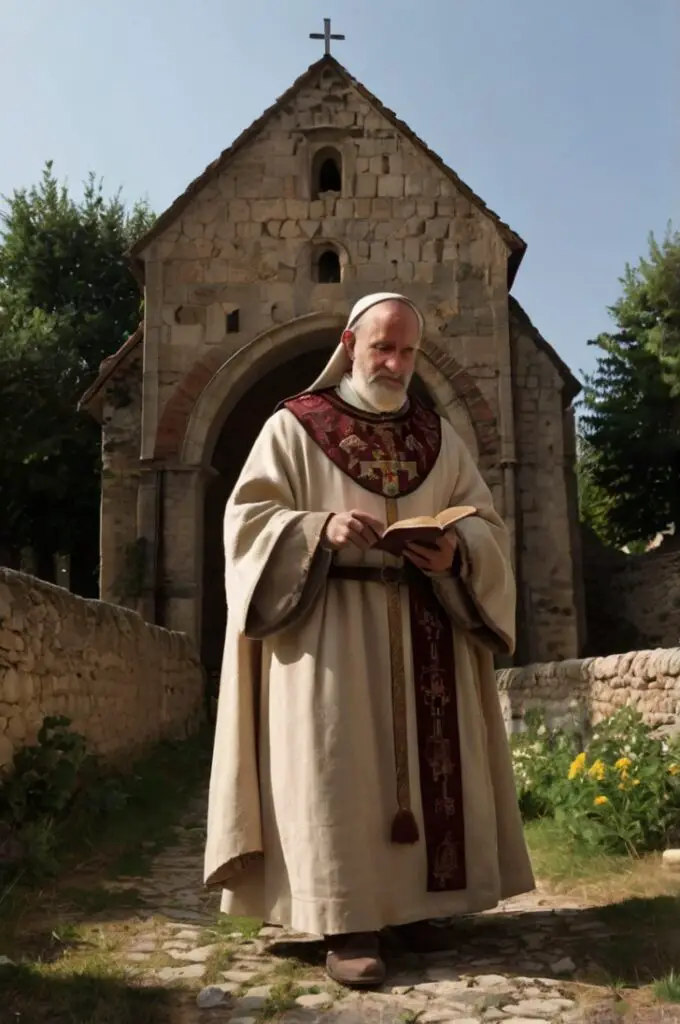
Challenges and Debates within Christianity
The spread of Christianity was not without its challenges and debates:
Heresies
Throughout history, various groups challenged mainstream Christian beliefs, leading to significant debates and conflicts.
For example, the Cathars in southern France and the Waldensians in Italy held beliefs that differed from those of the established Church.
These groups were often labeled as heretics, meaning they were seen as holding views contrary to orthodox Christianity.
In response, the Church took steps to suppress these movements, including calling councils to condemn them, issuing decrees, and sometimes even using military force to quell dissent.
The Great Schism
In 1054, a major split occurred between the Western Roman Catholic Church and the Eastern Orthodox Church, known as the Great Schism.
This division was driven by a mix of theological disagreements, political conflicts, and cultural differences.
The split marked a significant rift in Christianity, separating the Church into two distinct branches.
This division had profound effects on Christian unity and led to ongoing differences in practices and beliefs between the two branches.
Crusades
The Crusades were a series of religious wars launched by the Latin Church with the goal of reclaiming the Holy Land from Muslim rule.
While the Crusades aimed to unite Christians and expand their territories, they also resulted in substantial loss of life and long-term conflicts.
The Crusades led to significant cultural exchanges between Christians and Muslims, but they also fostered lasting animosities and tensions.
The impact of the Crusades was complex, affecting both the history of Christianity and the broader historical context of the region.
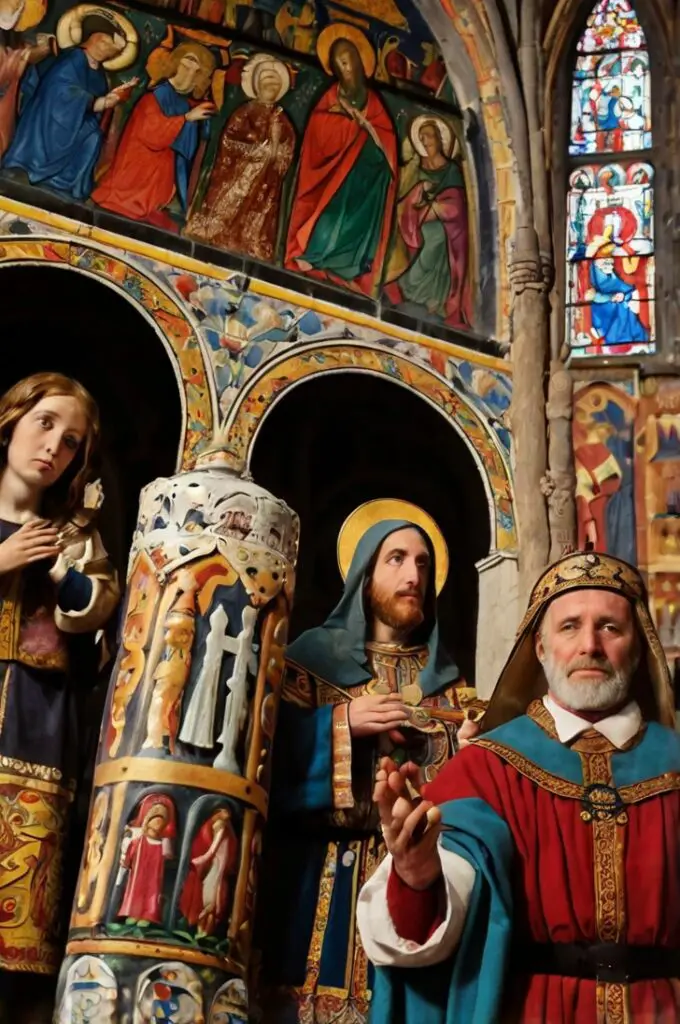
The Lasting Legacy of Christianity in the Middle Ages
The influence of Christianity during the Middle Ages has left an enduring legacy:
Cultural heritage
Christianity left a profound mark on the cultural heritage of the Middle Ages.
Many of the period’s artistic and architectural achievements were inspired by Christian themes.
For example, Gothic cathedrals with their intricate designs and stained glass windows were built to honor God and reflect the faith of the people.
Additionally, monastic scribes worked tirelessly to preserve classical texts, which played a crucial role in setting the stage for the Renaissance, a period of renewed interest in art and learning.
Legal and ethical systems
Christianity also had a significant impact on legal and ethical systems during the Middle Ages.
Canon law, which was based on Christian teachings, influenced many aspects of daily life, including marriage, morality, and justice.
This legal framework helped shape the rules and norms that governed medieval society, and its principles continued to influence European legal systems long after the Middle Ages.
Social institutions
The medieval Church was the birthplace of many important social institutions that continue to play a role in modern society.
Hospitals, universities, and charitable organizations often originated from the Church’s efforts to care for the needy and educate the public.
These early institutions laid the groundwork for today’s systems of education, healthcare, and social welfare, showing how the Church’s focus on service and support helped shape contemporary social structures.
Conclusion
The spread of Christianity in the Middle Ages was a complex and multifaceted process that transformed European society.
Through missionary work, monasticism, political support, and cultural integration, Christianity grew from a persecuted faith to the dominant religion of Europe.
Its impact on social structure, education, art, and architecture was profound, and its legacy continues to shape Western civilization today.
